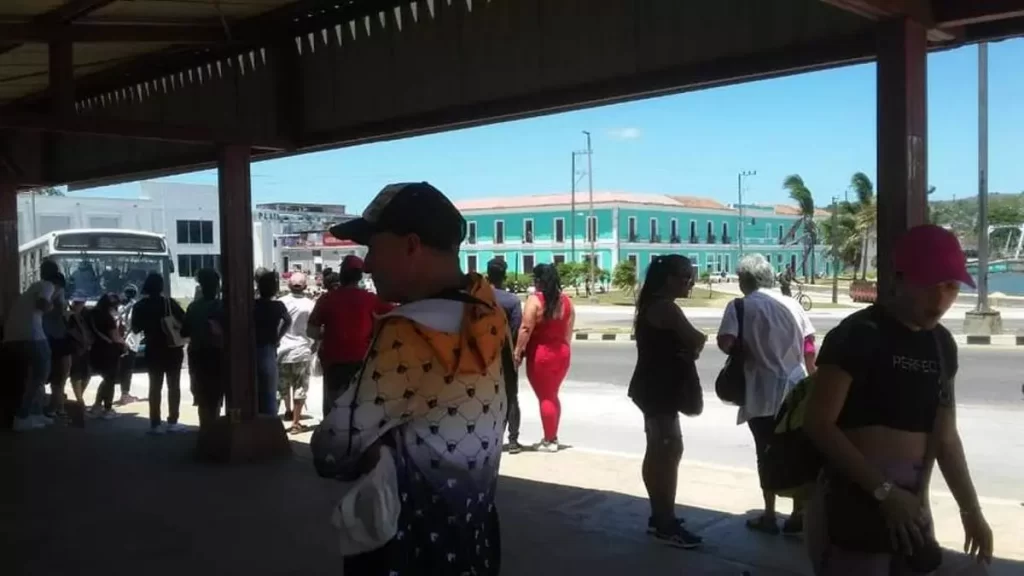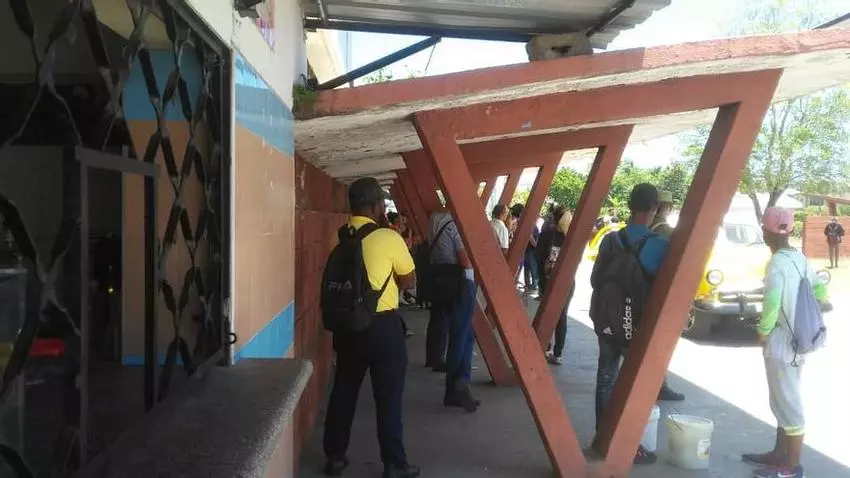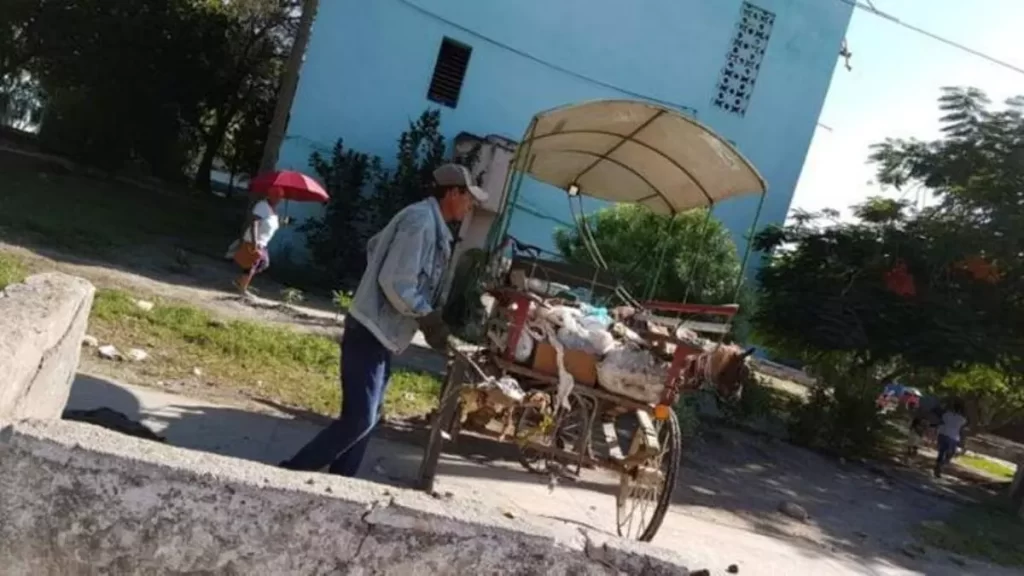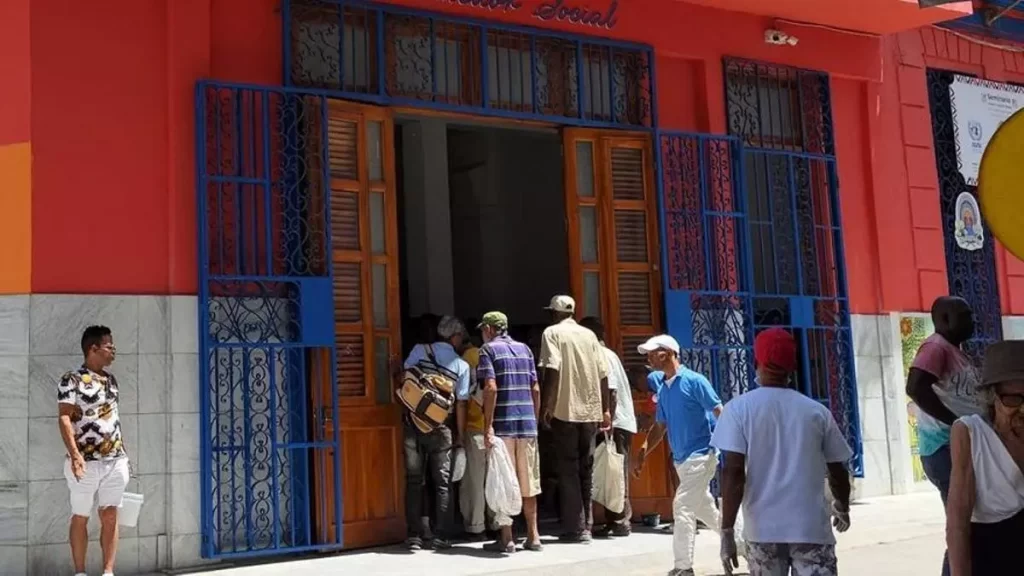Not even the “blues,” the inspectors in charge of intercepting vehicles and boarding passengers in Matanzas, “impose respect”

![]() 14ymedio, Julio César Contreras, Matanzas, April 27, 2024 — A Transmetro bus passes by and does not stop. A few minutes later, one from Transtur follows it. Travelers on any road in Matanzas look in desperation at the empty vehicles with the long-awaited air conditioning. “Not even the cars with State license plates stop anymore,” they lament, despite the fact that the leaders have given them the order to pick up passengers.
14ymedio, Julio César Contreras, Matanzas, April 27, 2024 — A Transmetro bus passes by and does not stop. A few minutes later, one from Transtur follows it. Travelers on any road in Matanzas look in desperation at the empty vehicles with the long-awaited air conditioning. “Not even the cars with State license plates stop anymore,” they lament, despite the fact that the leaders have given them the order to pick up passengers.
Not even the soothsayer Nostradamus could predict the times in which public buses circulate within the city of Matanzas. The traditional routes have been terminated for a long time, in an instability that significantly affects the daily routine of the matanceros.
Whether they are articulated, panoramic or assembled by pieces in a state workshop – such as the Dianas – the buses do not work at the same time, much less every day. That translates into a mass of stacked and sweaty Cubans who, when the rush hour arrives at stops, must decide whether to wait for a State car that deigns to pick them up or walk to their destination.
“The blockade does not come from outside, the blockade is here inside,” emphasizes an old man who claims – fanning himself with an improvised leaf – to have been waiting for more than an hour for transportation to go from the historic center to the Peñas Altas area. “Is there no oil?” asks a woman and from the same line the answer emerges: “What there is is no shame, señora. Look at that bus: it’s empty. continue reading
“The blockade does not come from outside, the blockade is here inside,” emphasizes an old man
Not even the figures of the “blues” – inspectors in charge of intercepting vehicles and boarding passengers – “imposes respect” on the state Ladas and Kamazes. To top it all off, the old man still sitting at the stop says, they are as inefficient as the public transport itself. “They only work half a day and on weekends so you can’t expect them.” Nor do the forceful looks of the “blues” and their clipboards intimidate anyone.
The Government’s vehicles pass, wave, and the inspector says goodbye “as if it’s nothing.” When the cars are not known but have State plates, the official registers the number – or pretends to – on a sheet of paper so as not to “offend” overcrowded travelers.
In the end, the “weakest link,” tired of waiting, gets out of line and takes charge of the matter. Any well-formed line is abruptly interrupted when a bus appears. Even if it’s empty, there are pushes and offenses. Pregnant women, children, the elderly and disabled, called to board first, must cross the furious mass in order to get a seat and not run the risk of being left behind.
The disorder quickly becomes a feeding ground for thieves and pickpockets, who grab chains, cash and even cell phones. By the time they manage to get on the bus, many passengers have even been stripped of their identity cards.

The other side of the coin is the private carriers, who, in line with inflation, impose their prices according to “their objective and subjective needs.” For a trip of a few kilometers, a motorcycle taxi charges between 300 and 500 pesos, Mario, the driver of an electric motorcycle, tells this newspaper. In the case of a vehicle, for the same distance, the price ranges between 50 and 100 pesos per person. The máquinas*, on the other hand, charge about 100 pesos.
According to Mario, those are just the “standard prices.” “If I rent or work at night, the costs go up.” The electric vehicles, which the Government announced last January with pomp and fanfare after buying them at $7,000 each, are far from meeting the city’s demand for transport
At the central transport stop, from which the old man was able to escape in an agricultural truck, a medical student now occupies his seat. “It can already be said with propriety that Matanzas is the Athens of Cuba and, like the ancient Athenians, we do everything on foot,” he mocks. A few streets ahead you can see the remains of the old tram line, inaugurated when the city was experiencing better times and the only blue was that of the bay.
*Translator’s note: Máquinas, almendrones and colectivos are overlapping names for similar services: generally a shared taxi service (and in some cases fixed-route) provided by classic American cars, which are now generally retrofitted with diesel engines because that fuel is more likely to be available than is gasoline.
Translated by Regina Anavy
____________
COLLABORATE WITH OUR WORK: The 14ymedio team is committed to practicing serious journalism that reflects Cuba’s reality in all its depth. Thank you for joining us on this long journey. We invite you to continue supporting us by becoming a member of 14ymedio now. Together we can continue transforming journalism in Cuba.

















